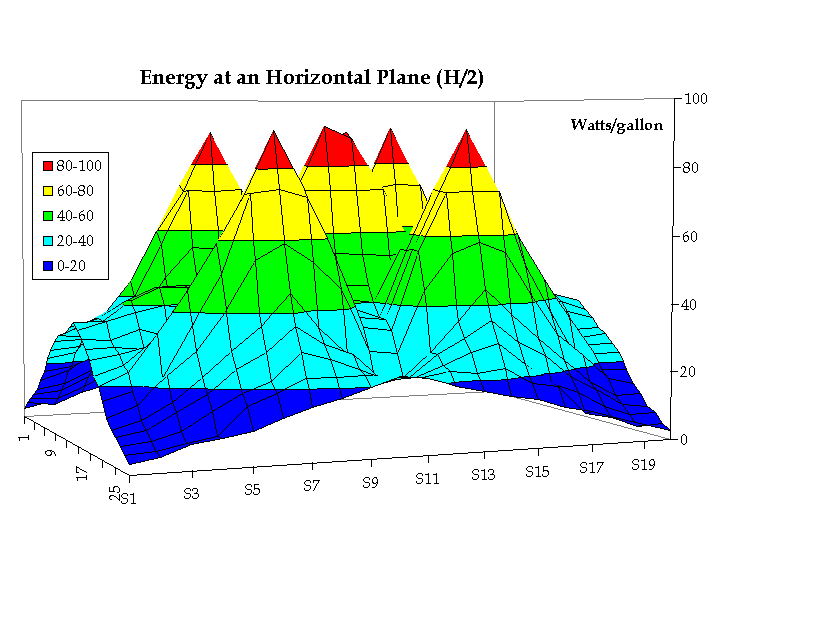
|
|||
|
|
|||
| MAPPING ENERGY |

|
|
Objective: To profile the cavitation energy at an horizontal plane in a DI water tank. Procedure: Method: The transducer is 9 long, by 6.5 wide, by 3 deep. The 316 stainless steel box contains actually 5 transducers inside it operating at about 100 watts each. The tank is filled with 5.85 gallons of de-ionized water and sonicated for 30 minutes for de-gassing. The water temperature is recorded at 20° centigrade throughout the experiment. The water depth is 6.7. The surface of the probe is kept parallel to the bottom of the tank at 3.7 from the top lip of the tank. Setting the meter in AUTO mode, the probe is located at one corner of the tank and run for 10 seconds. The probe is then re-located 0.5 away from its previous position in order to walk it along the X (longitudinal) axis at a fixed Y (latitude). This procedure is repeated until 560 data points have been obtained. The data is down-loaded 100 data points at a time to a PC using excel format. Results: The average energy at this plane is 78 watts per gallon. Discussion: |